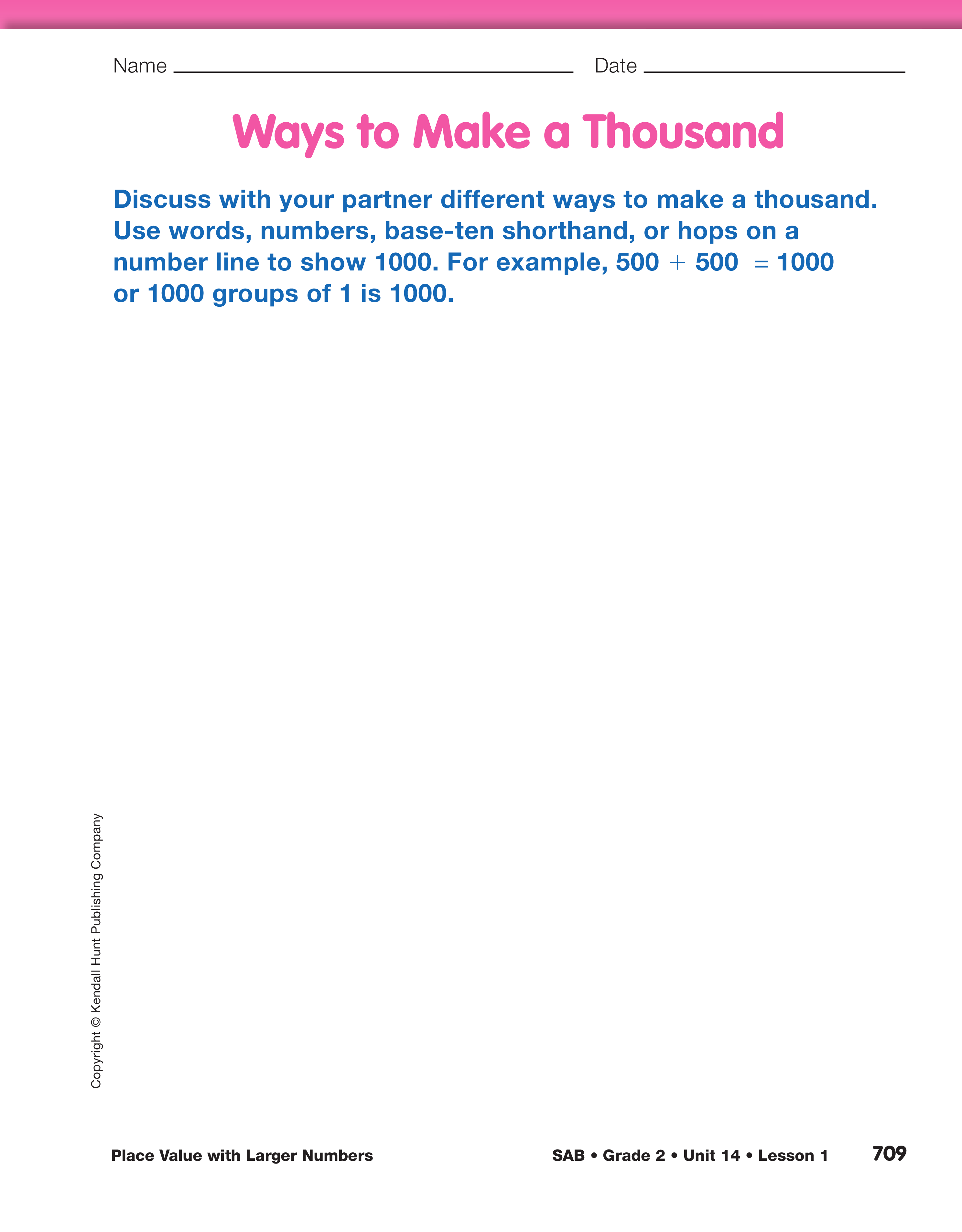Place Value with Larger Numbers
Est. Class Sessions: 2Developing the Lesson
Part 1: Representing One Thousand
Show One Thousand Ants. Read aloud the book One Hundred Hungry Ants by Elinor J. Pinczes. In the story, ants find different ways to make groups that add to 100.
After reading the story, ask:
Show the first page of the accordion fold book with 100 ants. See Materials Preparation.
Ask:
Have students discuss with a partner what a thousand would look like and then share their ideas with the class. Some students may know immediately that a thousand is 10 groups of 100, but others may think that a thousand is double the group of 100. Use the accordion fold to demonstrate what a thousand looks like. Have a student volunteer hold one end of the book and show an additional page of 100.
Adding one page at a time, ask:
Finally, open the book completely into one long strip.
Ask:
Compare the picture to the base-ten pieces by explaining that each ant is like a bit, each row of ants is like a skinny, 10 rows is like a flat, and the 10 groups of 100 ants is like a pack. Hold up the pack and tell students its name and the symbol using base-ten shorthand. See Figure 2.
Use a set of base-ten pieces to review the bit (one), skinny (ten), flat (100), and pack (1000). As you ask the following questions, demonstrate the relationship between ones, tens, hundreds, and thousands using base-ten pieces.
Ask:
Make One Thousand Many Ways. Display and introduce the Ways to Make a Thousand page in the Student Activity Book. Ask student pairs to show different ways to make a thousand and explain that they can write number sentences (e.g., 500 + 500 = 1000) or they can write phrases (e.g., 1000 groups of 1 = 1000). Explain that the groups do not have to be equal in size. For example, they can write the number sentence 999 + 1 = 1000. Students may also use base-ten shorthand or number lines to show ways to make a thousand.
Upon completion, have students share ways to make a thousand.























